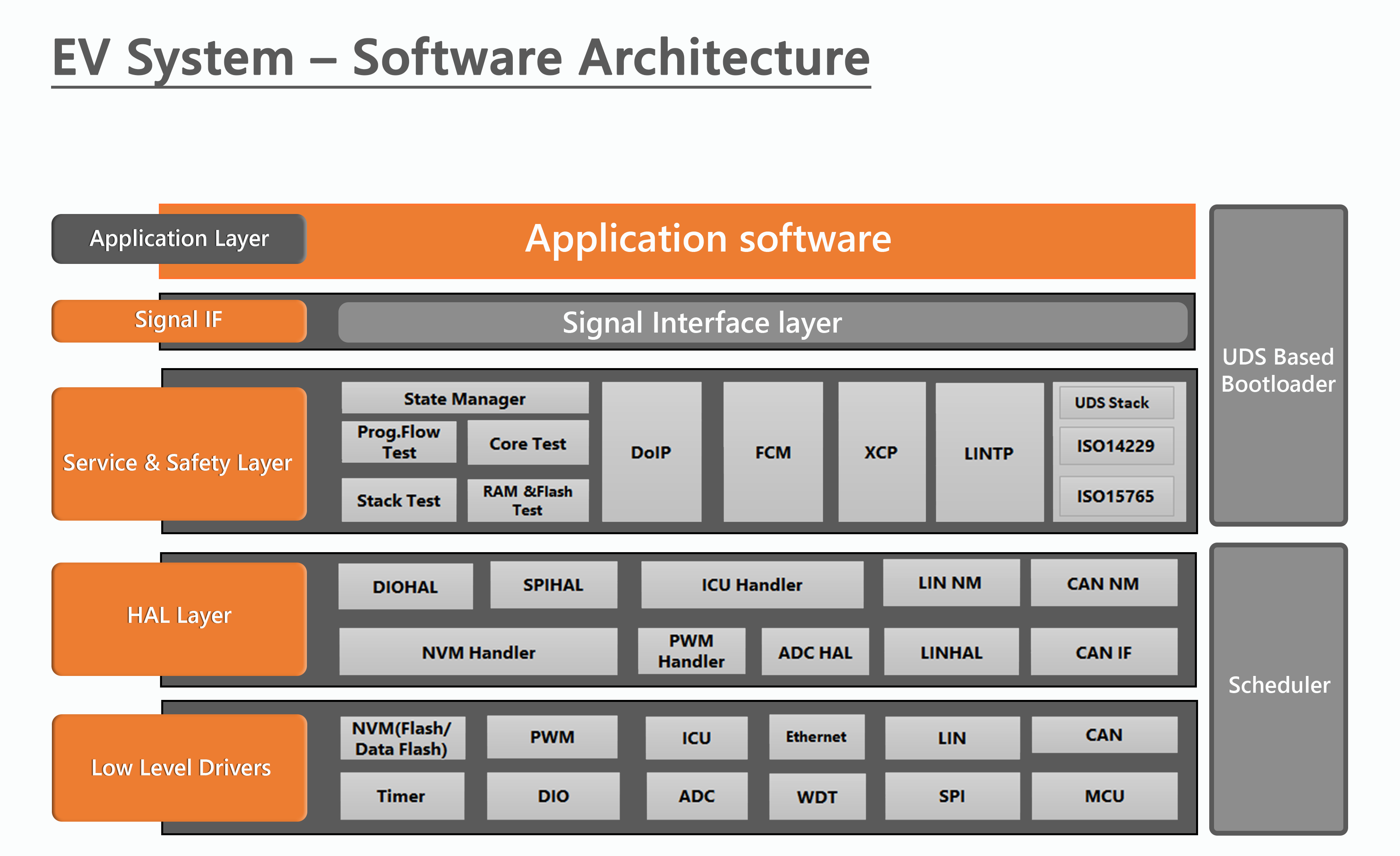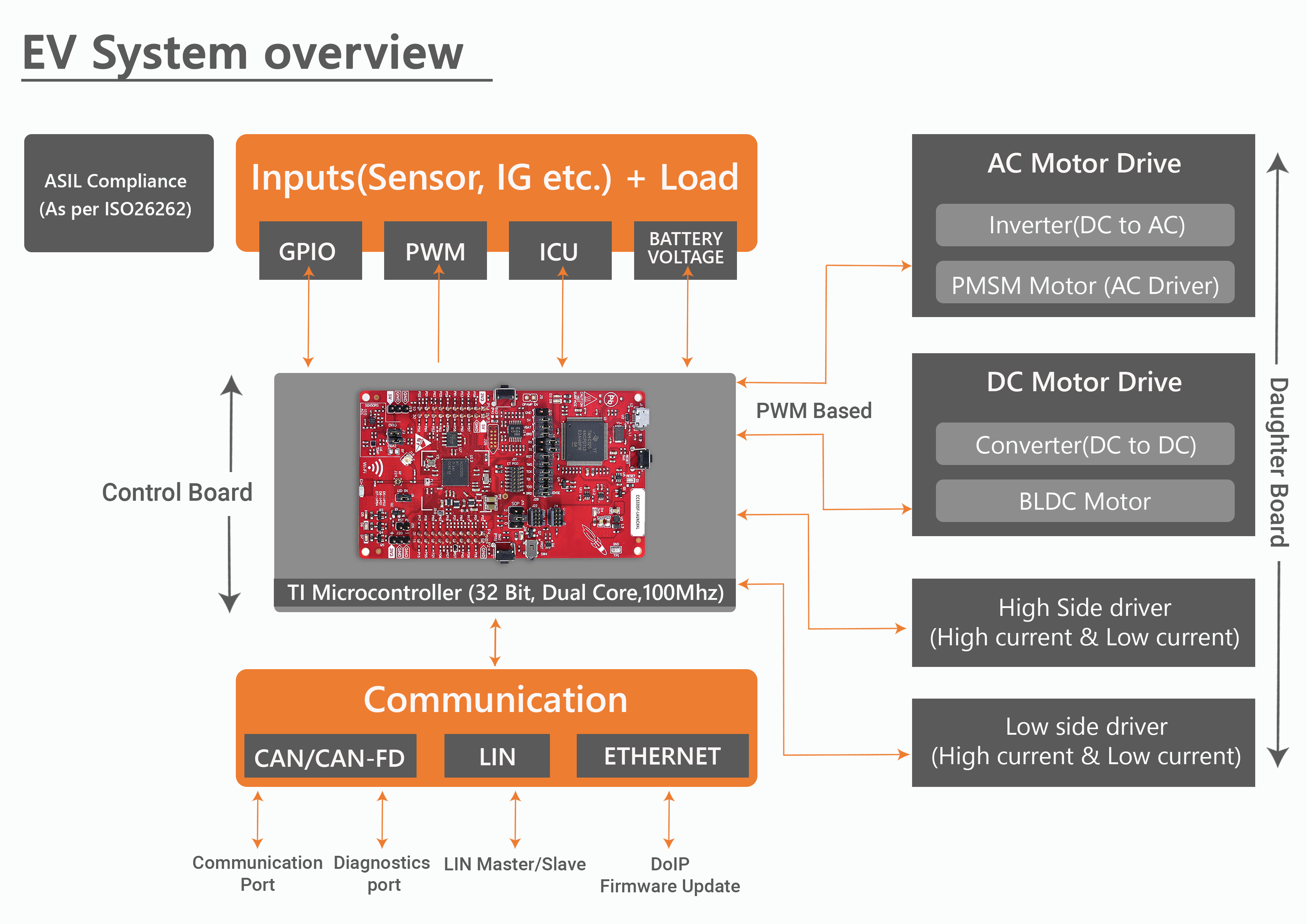” From Combustion to Electric” is the latest Wave of Innovation being witnessed by the Automotive Industry. This nudge towards Battery Driven Electric Vehicles is not only from within the industry but also from the governments.
For example, “Made in China 2025” is an ambitious and aggressive initiative from the Chinese government to ensure that the country enjoys the highest share of Electric Vehicle production in the global market.
However, the widespread acceptance of Electric Vehicles will depend on the efficiency of the Electric Car or Electric Scooters. And that partially boils down to the Motor Control System that power the EV drivetrain.
The Role of Motor Control System in EVs
A motor control systemis lot more than merely a system that controls the driving speed of Brushless DC Motor or PMSM motor. A number of algorithms are at play that ensure smoother driving experience, ECU diagnostics, efficiency and more.
Furthermore, in order to drive motors of different capacity, using the same motor controller, additional power control mechanisms are required. This complexity underscores the critical role of a versatile motor control system in the electric vehicle ecosystem.
Working on these lines, Motor Control system experts at Embitel have built an Electronic Control Unit (ECU) Platform, which is capable of driving PMSM and BLDC motors of different capacities.
This Control Unit Development Platform for motors, can help you unlock the true potential of your innovations in Electric Scooters, E-Auto, Electric Pick-up Trucks, Electric Four Wheelers and more. . This one-of-a-kind motor control system has a host of features including the Field-Oriented Control (FOC) algorithm.
Let’s take you on a walk-through of our Motor Control ECU architecture, which is also powering the Electric vehicle initiatives of one of the leading Indian OEMs.
[Demo Video] How FOC Algorithm Works in A Motor Control Solution for Electric Vehicles
The All New Motor Control System ECU from the Innovation Labs at Embitel
Innovation has been the in the DNA of Embitel from its very beginning. And to ensure that it doesn’t just remain a word uttered occasionally in seminars and monthly mailers; we have set up an Innovation lab. The ideas from all quarters are welcomed and nurtured in the lab by our engineering teams.
One of such ideas to develop a ready-to-deploy motor control system was incubated in the lab and it has now transformed into a cutting-edge solution offering for our customers.
Let’s now get started to learn all about our in-house designed and developed Motor Control Solution ECU (Welcome to “Make in Embitel” Zone)! The push towards electric vehicles is not limited to cars and 2 wheelers only. To ease the load on Diesel driven public transport vehicles, E-Autos, E-Rikshaws and other such vehicles are being promoted. However, there are certain roadblocks that need to be overcome, w.r.t the application of electric motors in EV. While Brushless DC and PMSM motors have been the preferred electric motors for electric vehicles, their power requirements vary for different types of EVs. For better clarity, let’s take an example of an OEM who is working on different segments of Electric Vehicles (like 2-wheelers, three-wheelers, 4-wheelers and even electric commercial vehicles). Each vehicle will require an Electric Motor of different power ratings and hence a separate motor control solution needs to be developed for each of them. Increased time-to-market and inflated cost are two of the adverse effects that this OEM will need to overcome. This challenge (related to Motors of different Power Ratings) can be overcome with our EV Motor Controller Unit. Its two-tier technology architecture is designed to separately manage the Power Control and drive algorithms (that drive the motor). Simply put, the microcontroller driving the motor will remain unchanged for every motor (BLDC or PMSM). Only a separate hardware chip, called the daughter board will need to be customized based on the electric motor’s power rating. Need more clarity? The layered Software and Hardware architecture will help you develop a better understanding! Before we look at the architecture of the EV Motor Controller, let’s explore the components of the Control unit. Now let’s understand the software architecture of our EV Motor Control System. Service, Safety and Utility Layers: These are the most important layers in terms of functionality. The coveted Field-Oriented Control algorithm is part of these layers, along with other safety, in-vehicle networking and vehicle diagnostics stacks. Now let’s have a more detailed overview of the software architecture: Other modules like LINTP, XCP, FCM, Stack Test, CPU Load etc. are also included for safety, in-vehicle communication and fault handling. Hardware Abstraction Layer: HAL comprises of the routines and functions that lets the upper layers interact with the ECU hardware. As seen in the diagram, CAN Network Management, CAN Interface, LIN Network Management, ADC etc. are some of the protocols for which HAL has been included. The Hardware Abstraction Layer in this motor control system comes in handy when the algorithms need to be migrated to a different MCU family. Low-Level Drivers: LLD is the basic microcontroller peripheral. It has no idea about the nature of the value that it is receiving from the microcontroller. Its job is to pass on the value to the HAL where the value will be converted to a physical value. For example, the LLD measures a current value which is 0-5 V. When this value is received by Hardware Abstraction Layer, it is converted to a physical value of 0-30 A. LLDs for PWM, ADC, LIN, CAN and MCU are included in the bottom-most layer of our EV motor control system. The hardware platform that supports our FOC algorithm and other software stacks is also a very crucial part of the EV motor control unit. Let’s have a quick overview of the underlying hardware. Our EV Motor Control Unit has been designed on an Automotive-grade, Dual Core Microcontroller platform– 32 Bit TI Delfino. The Control Board (Microcontroller) receives inputs from: This EV System overview will give a better understanding. Based on these inputs, the Field-Oriented Control algorithm directs the MCU to generate PWM signals. These signals are sent to the Daughter Board (Power Board). Daughter Board, as explained earlier, is the power management system of our EV Motor Controller unit. Also called as the power board, it is responsible for generating the current supplied to the electric motors. As mentioned earlier, it consists of varying number of MOSFETS for this purpose. The addition of the Daughter Board has made our motor controller platform a highly flexible and a universal solution for Electric Vehicle Applications. Whether you need to drive a smaller BLDC or PMSM motor or a bigger one, the MCU remains the same. All one needs to customize is the small daughter board The customizations for different use-cases essentially boil down to Higher the power rating of the motor, larger the number and rating of the MOSFETs. For instance, our prototype motor control system designed for a 5 KW BLDC motor has 6 MOSFETs in parallel on each side of the board. Now to drive a smaller EV, say an electric 2-Wheeler that requires a 1 Kw motor, the daughter board will require only 2 smaller MOSFETs. Other supporting hardware components will also be based on the electric motor’s power rating. The motor control system being a vital component in various mechanical and electrical applications, offers precise regulation and management of motor functions. Those can be other appliances like industrial machines, ventilators etc. Whether in industrial machinery, robotics, or automotive systems, the motor control system plays a pivotal role in ensuring optimal performance, efficiency, and safety. By interfacing with sensors and feedback mechanisms, it orchestrates the speed, direction, and torque of motors, adapting seamlessly to diverse operational requirements. From simple on-off control to sophisticated closed-loop systems, the versatility of motor control systems caters to a wide spectrum of needs, empowering automation and enhancing productivity across industries. A couple of areas where motor control systems are advancing and likely to continue evolving: Neuroprosthetics and Brain-Machine Interfaces (BMI): Motor control systems play a crucial role in neuroprosthetics, which involve the development of devices to restore motor function in individuals with disabilities. Recent innovations include the use of advanced motor control algorithms to decode neural signals and translate them into control commands for prosthetic limbs or exoskeletons. Additionally, Brain-Machine Interfaces (BMI) are being developed to enable direct communication between the brain and external devices, allowing individuals with paralysis to control computers, robotic limbs, or even their own muscles using their thoughts. Rehabilitation Robotics: Motor control systems are integral to rehabilitation robotics, which involves the development of robotic devices to assist patients with physical therapy and rehabilitation. Recent advancements include the use of adaptive control algorithms to personalize therapy sessions based on the patient’s progress and abilities. Robotics-assisted rehabilitation devices equipped with advanced motor control systems can provide precise and repetitive movements to aid in recovery from stroke, spinal cord injuries, or orthopaedic surgeries. These systems often incorporate sensors and feedback mechanisms to monitor the patient’s progress and adjust therapy parameters in real-time. As is quite evident from its design, our EV motor control system ECU is designed to cater to the changing needs of the Electric Vehicle industry. The segregation of motor drive logic (FOC algorithm) and power management aids in faster turn-around time for EVs programs. For a Demo of our Motor Control system for Electric Vehicles, please contact us at sales[at]embitel[dot]com.
Understanding the Layered Architecture of EV Motor Control System ECU

Interface Layer: The role of the IF layer is to act as an interface or a bridge between the application layer and the other layers of the motor controller platform. The Application Layer (not part of our platform) will host all the OEM-specific applications.
Hardware Architecture Powering Our EV Motor Control System ECU

Customizations Required to Cater to Different Use-Cases of EV Motor Control Unit
Outside the EV Landscape
Final Remarks


